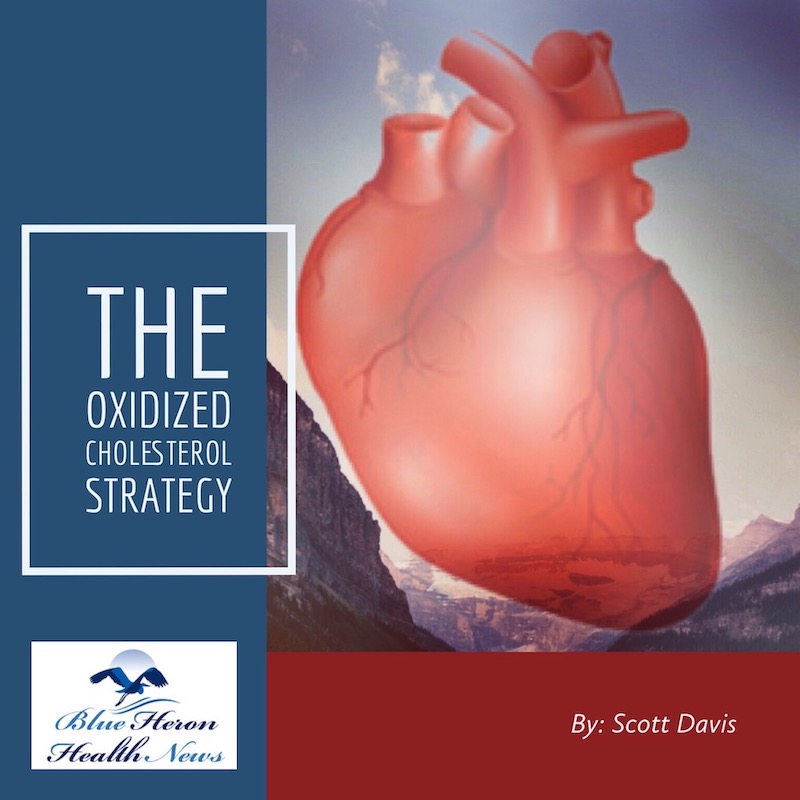
The Oxidized Cholesterol Strategy By Scott Davis is a well-researched program that reveals little known secret on how to tackle cholesterol plaque. This program will tell you step by step instructions on what you need to completely clean plaque buildup in your arteries so as to drop your cholesterol to healthy level. It also helps to enhance your mental and physical energy to hence boosting your productivity.
How does oxidized cholesterol contribute to atherosclerosis?
Oxidized cholesterol, particularly oxidized low-density lipoprotein (ox-LDL), plays a crucial role in the development and progression of atherosclerosis, a condition characterized by the buildup of plaques within the arterial walls. This process can lead to serious cardiovascular events such as heart attacks and strokes. Here’s how oxidized cholesterol contributes to atherosclerosis:
1. Oxidation of LDL Cholesterol:
- Formation of Oxidized LDL: Low-density lipoprotein (LDL) cholesterol becomes oxidized when it reacts with free radicals—unstable molecules produced by processes such as smoking, exposure to pollutants, or chronic inflammation. Oxidation primarily affects the polyunsaturated fatty acids in the LDL particle’s phospholipid layer, leading to structural changes in the LDL molecule.
- Increased Reactivity: Once oxidized, LDL becomes more reactive and harmful compared to its non-oxidized form. Oxidized LDL is not recognized by the normal LDL receptors on cell surfaces, which leads to its accumulation in the arterial walls.
2. Endothelial Damage and Dysfunction:
- Endothelial Damage: The endothelium is the thin layer of cells that lines the interior of blood vessels. Oxidized LDL can directly damage the endothelial cells, making the endothelium more permeable to circulating lipids and inflammatory cells.
- Endothelial Dysfunction: Oxidized LDL impairs the production of nitric oxide (NO) by the endothelium. Nitric oxide is essential for maintaining vascular health, as it promotes vasodilation (widening of blood vessels) and reduces blood pressure. Reduced nitric oxide levels lead to endothelial dysfunction, a critical early step in atherosclerosis.
3. Inflammatory Response:
- Immune System Activation: The body’s immune system recognizes oxidized LDL as abnormal and harmful. Macrophages, a type of white blood cell, are recruited to the site of endothelial damage to engulf oxidized LDL particles in an attempt to remove them from the bloodstream.
- Foam Cell Formation: When macrophages ingest oxidized LDL, they transform into foam cells. These foam cells accumulate within the arterial walls, forming fatty streaks, which are the earliest visible signs of atherosclerosis.
4. Plaque Formation:
- Development of Atherosclerotic Plaques: As foam cells continue to accumulate, they combine with other cellular debris, smooth muscle cells, and extracellular matrix components (such as collagen) to form atherosclerotic plaques. These plaques thicken the arterial wall and narrow the artery’s lumen, restricting blood flow.
- Calcification and Plaque Hardening: Over time, the plaques may undergo calcification, which hardens the plaque and the arterial wall, further reducing the artery’s flexibility and ability to dilate. This hardening of the arteries is known as arteriosclerosis.
5. Plaque Instability and Rupture:
- Plaque Vulnerability: Oxidized LDL contributes to the instability of atherosclerotic plaques. Plaques with a large lipid core, a thin fibrous cap, and significant inflammation are more likely to rupture.
- Rupture and Thrombosis: If the fibrous cap of a plaque ruptures, the contents of the plaque, including oxidized LDL and inflammatory mediators, are exposed to the bloodstream. This exposure triggers the formation of a blood clot (thrombus) at the site of the rupture.
- Obstruction of Blood Flow: A thrombus can obstruct the artery, completely blocking blood flow to vital organs such as the heart (leading to a heart attack) or the brain (leading to a stroke).
6. Chronic Inflammation:
- Sustained Inflammatory Response: The presence of oxidized LDL perpetuates a chronic inflammatory response within the arterial wall. This inflammation is driven by the continuous recruitment of immune cells, such as macrophages, and the release of pro-inflammatory cytokines.
- Progression of Atherosclerosis: Chronic inflammation not only promotes the formation of plaques but also contributes to their growth and complexity. This can lead to further narrowing of the arteries and increased risk of plaque rupture.
7. Smooth Muscle Cell Proliferation:
- Smooth Muscle Cell Migration: Oxidized LDL can stimulate smooth muscle cells from the arterial wall to migrate into the intima (the inner layer of the artery) and proliferate. These cells produce extracellular matrix components, which contribute to the growth of the plaque.
- Plaque Stability: While smooth muscle cells are involved in stabilizing the plaque, their excessive proliferation in response to oxidized LDL and other inflammatory signals can lead to further thickening of the arterial wall and narrowing of the artery.
8. Complications and Clinical Outcomes:
- Reduced Blood Flow: As atherosclerotic plaques grow and harden, they reduce the elasticity of the arteries and limit blood flow. This can lead to chronic conditions such as angina (chest pain) due to reduced blood flow to the heart muscle.
- Increased Risk of Acute Events: The rupture of atherosclerotic plaques, particularly those rich in oxidized LDL, can lead to acute cardiovascular events like myocardial infarction (heart attack) or cerebrovascular accidents (stroke).
Conclusion:
Oxidized cholesterol, particularly oxidized LDL, is a central player in the development and progression of atherosclerosis. It contributes to endothelial damage, triggers an inflammatory response, leads to the formation of foam cells, and promotes the development of atherosclerotic plaques. The instability of these plaques, driven by oxidized LDL, increases the risk of plaque rupture and subsequent thrombosis, leading to serious cardiovascular events such as heart attacks and strokes. Preventing the oxidation of LDL cholesterol through lifestyle changes, a healthy diet, and managing oxidative stress is crucial in reducing the risk of atherosclerosis and its associated health risks.

The Oxidized Cholesterol Strategy By Scott Davis is a well-researched program that reveals little known secret on how to tackle cholesterol plaque. This program will tell you step by step instructions on what you need to completely clean plaque buildup in your arteries so as to drop your cholesterol to healthy level. It also helps to enhance your mental and physical energy to hence boosting your productivity.